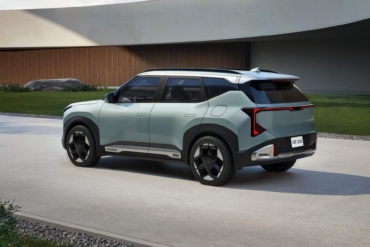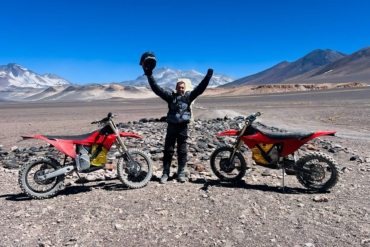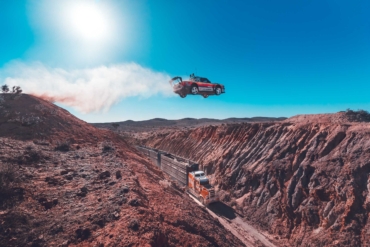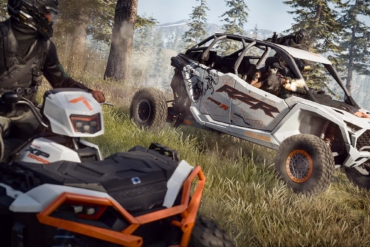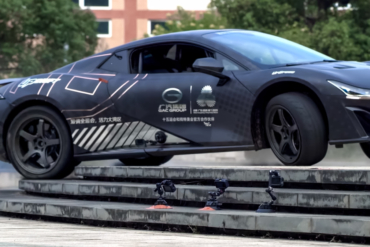With prices of classic 4x4s on the rise, grab one of these gems quickly.
The best affordable classic 4x4s worth buying today is a wide-open topic that can lead to lengthy and sometimes impassioned discussions.
For instance, what does the best affordable classic 4×4 mean? If you’re flush with cash, finding a reasonably priced classic 4×4 could mean spending much more than the average classic 4×4 enthusiast may define as affordable. Let’s set some boundaries before we get deep into this conversation.
Keep in mind that most classic 4×4 fans are likely to be pretty handy with a wrench and a welder. They will need to be. Most classic 4x4s are not in showroom condition. The truth is that for a classic 4×4 to be truly affordable to most buyers, it will have some issues.
It’s probably going to have an imperfect body, faded or peeling paint, a patina of rust here and there, some missing parts, and mechanicals that will need to be repaired, replaced, or otherwise tended to.
Also, in recent years, prices for classic 4x4s have started soaring to stratospheric heights. We’ve seen this through live auctions like Barrett-Jackson and online auctions like Bring-a-Trailer.

The Top 5 Best Affordable Classic 4x4s
Let’s look at our top five picks for the best affordable classic 4x4s, how they were equipped, and things to watch for.
Naturally, prices vary depending on the vehicle’s mechanical condition, along with its level of upgrades and modifications. Mileage of 100,000 miles or greater is common among older vehicles. Under these circumstances, the state of its body and undercarriage can widely differ, depending upon which region of the country it spent most of its life — the Rust Belt versus the Southwest.
Ford Bronco (1978-1979)
As if running examples of the first-generation Ford Bronco weren’t expensive enough, the news and launch of Ford’s modern retro SUV have sent asking prices for 1966-1977 Broncos into an upward trajectory that makes them nearly unobtainable to the average classic 4×4 enthusiast. We have good news, though.
One of the best affordable classic 4x4s is the second generation of the Ford Bronco. It’s more powerful, larger, and comes with more features than the prior generation. Running examples of it are much more affordable today than first-generation Broncos.
These factors together make the second-generation Ford Bronco one of our top affordable classic 4x4s worth buying today.

Boxy Is Cool
The second-generation Ford Bronco was the last to have a solid front axle in addition to a coil-sprung Dana 44 up front and a Ford 9-inch axle in the rear. Two powerplants were offered: the Ford 351M V8 (5.8L 16-valve) and the Ford 400 (6.6L 16-valve).
Not one but three transmissions were available: two manuals and one automatic. Both the four-speed Borg-Warner T-18 and four-speed New Process 435 manuals are excellent heavy-duty truck transmissions with high first-gear ratios fabulous for off-roading. And either would be our choice over the C-6 automatic transmission also found in second-generation Ford Broncos.

Transfer case choices were the full-time chain-driven New Process 203 (a differential in the rear of the case allows the front and rear shafts to spin at different speeds) and the part-time gear-driven New Process 205. We prefer the New Process 205 for its simplicity and reliability.
Popular Then & Now
For such a short production cycle of just 2 years, it did quite well. During its reign, it outsold the Chevrolet Blazer and Dodge Ramcharger of the day. Nowadays, a classic 4×4 enthusiast can find a number of them for sale at pretty modest prices. Not to mention that spare parts and aftermarket upgrades for the second-gen Bronco are easy to source.
Despite this generation of Ford Bronco rising in value, we found good high-mileage examples with prices as low as $9,500.
Toyota 4Runner (1996-2002)
For many reasons, the tried and true Toyota 4Runner is one of our picks for the best affordable classic 4x4s worth buying today. The third generation was the 4Runner’s first significant redesign, receiving an all-new sleek and contoured steel body.
The wheelbase grew 2 inches, and there is an extended side rail cross-section on the frame. The more-rigid chassis resulted in a better ride, especially when traveling off-road.
It was also the first 4Runner to feature a four-wheel coil-spring suspension design and rack-and-pinion steering. Accordingly, the ride and handling improvements over prior generations were dramatic. It shared engine and drivetrain components with the then-new Tacoma, making the availability of parts then and now far more generous.

4Runner Drivetrain
Engines available for the third-generation Toyota 4Runner were the 3RZ-FE 2.7L inline four-cylinder. You will also find some with the more powerful 5VZ-FE 3.4L V6.
Although both engines have a good reputation for longevity, much like the previous generation’s 22-RE straight-four, we prefer the 3.4L V6. Primarily, it delivered better lower-rpm torque, which is necessary for off-road duty.
The third-generation 4Runner came with a four-speed automatic or five-speed manual. While we prefer the manual transmission, you will likely find more with automatics. Merely because most 4Runners — especially with the V6 engine — were ordered with automatic gearboxes.

Great Aftermarket Support
Aftermarket and factory support with parts, upgrades, and modifications for this vintage Toyota 4Runner is extensive. Aside from the robust list of parts and accessories available through Toyota, dozens of aftermarket companies worldwide produce performance upgrades and factory replacement parts for the third-gen Toyota 4Runner.
We found examples in good shape with minimal aftermarket upgrades running from $3,000 to $9,000.
Datsun/Nissan 720 Pickup (1980-1986)
The word “classic,” when applied to the Datsun/Nissan brand, would typically apply to the humble 510 that became a road racing phenom through the efforts of Brock Racing Enterprises in the late ’60s and early ’70s, or the sleek and sexy 240Z that debuted a year later.
However, in this case, it’s the Datsun 720 pickup truck we’re including in our category of best affordable classic 4x4s worth buying today. Why? Because it’s quirky and uncommon. We think it could be one of the next up-and-coming classic 4x4s.

US Debut
The Datsun 720 series pickup truck arrived on North American shores in 1980. And while a four-door crew-cab version was available elsewhere, the U.S. market only received the regular cab and King Cab models. Both offered two doors and regular or long bed options.
The 720 pickup truck debuted with Datsun’s 2.0L carbureted L20B four-cylinder engine. The following year it changed to the Z22S 2.2L four-cylinder carbureted engine with its NAPS pollution control system for the 1981-1982 model years.
An optional naturally-aspirated four-cylinder diesel engine (SD22 2.2L) was available in 1980-1983 models. In mid-1983, Nissan introduced the Z24 2.4L twin-spark four-cylinder gas engine, the SD23 2.3L OHV diesel four-cylinder, and the SD25 2.5L diesel four-cylinder.

720 Survivors
These later models built in the U.S. are the better years to look for if you’re interested in a classic Nissan 720 pickup truck. Surprisingly, there are many sources for replacement and aftermarket upgrade performance parts for the Nissan 720 pickups. These run the gamut from driveshafts to ring-and-pinion sets to locking axle differentials.
We found prices for good used Nissan 720 pickups ranging from $3,000 to $7,000.
Jeep Wrangler TJ (1997-2006)
Why the Jeep Wrangler TJ instead of an early CJ-series flat fender or the Jeep CJ-7? The Wrangler TJ is one of our picks for the best affordable classic 4x4s worth buying today because of its unique characteristics.
The Jeep Wrangler TJ was the second generation of the Wrangler model, but it was a lightyear jump in off-road technology from the previous Wrangler YJ or the CJs that came before that. We also refer to it as the “last of the little Jeeps” before the JK model filled the trails with four-door versions.

The Jeep Wrangler TJ was available in a short wheelbase and, as of the model year 2004, a long wheelbase model known as the Unlimited. Featuring an all-new front and rear coil-spring suspension, as well as a redesigned body and interior, the TJ retained the classic Jeep open-body style and signature solid front and rear axles.
Power came from a 4.0L inline six-cylinder engine or a 2.5L inline four-cylinder engine with a choice of three- or four-speed automatic transmissions and five- or six-speed manual transmissions. Later, the 2.5L was phased out in 2003 and replaced with the 2.4L PowerTech engine.
Wrangler Rubicon
The off-road-focused Rubicon model launched in 2003, with the Unlimited Rubicon not arriving until 2005. Aiding its trail prowess was a 4:1 ratio transfer case and a Dana 44 axle front and rear with standard electric locking differentials, whereas the non-Rubicon models carried a 2.72:1 ratio transfer case.

Prices for the TJ fall on the high side of what many would call affordable, and TJ Unlimited owners are already asking sky-high numbers. In our opinion, the non-Rubicon short-wheelbase TJs are the best buys. You can always upgrade it to Rubicon axles with lockers afterward.
Undeniably, the factory replacement and performance upgrade parts marketplace for the Jeep Wrangler TJ is extensive.
Look for the 4.0L engine paired with the five-speed manual or four-speed automatic. We found Jeep TJs in good shape — in near-stock or stock form — going from $4,000 to $10,000, depending on model year, equipment, and condition.
Chevrolet Blazer (1973-1991)
With quite possibly one of the longest production runs of any 4×4, the second-generation Chevrolet Blazer with its powerful engines and drivetrain wrapped in a boxy pre-wind tunnel body design is one of our picks for affordable classic 4x4s worth buying today.
Along with the rest of the GM truck line, the second-generation Chevrolet Blazer experienced a significant redesign. Some two-wheel-drive Blazers were being built as late as 1982, but the vast majority of the second-generation K5s were 4x4s.
Powertrain and Drivetrain Options
The new K5 Blazer came with a 4.1L inline six-cylinder engine as standard equipment into the model year 1984. It was available with a wide selection of other engines during its production run, including the desirable 6.2L Detroit Diesel V8, a 4.8L inline-six, and a cadre of V8 (5.0L, 5.7L, and 6.6L) engines.

With the advent of throttle-body fuel injection (TBI) after 1987, the 5.7L was made the standard powerplant and is likely what you’ll find in most of the later-model second-generation K5 Blazers.
Some 1973 to 1980 model-year K5 Blazers were optioned with the preferable gear-driven part-time NP-205 transfer case mated to the SM465 manual transmission. Others had the chain-driven full-time New Process 203 transfer case paired with the TH350 automatic.
The Dana 44 front and Corporate 12-bolt rear axle combination ran through to the 1980 model year. From 1981 until 1991, the chain-driven New Process 208 transfer case (designated as New Process 241 after 1988), with the front and rear Corporate 10-bolt axle combo, was used.
K5 Blazer Mid-Cycle Updates
From 1989 to 1991, the Chevrolet K5 Blazer received a series of updates and upgrades. New grilles, headlight bezels, and body side moldings were minor changes.
Here are some of the significant mechanical improvements that started in 1989:
- 30-spline axle shafts for the Corporate 10-bolt axles
- A single serpentine accessory drive belt on the standard 5.7L V8
- A switch to the New Process 241 transfer case with an improved oiling system, upgraded planetary gear, and a higher GVWR rating
For the 1990 model year, standard rear-wheel ABS and a further improved 5.7L with a redesigned rear crankshaft seal, new camshaft sprocket, and heavy-duty intake valves were onboard. More improvements came to the standard 5.7L engine in 1991, including an upgraded TBI system. The entire engine line also received more powerful 100-amp alternators in 1991.
First-generation Chevrolet Blazers (1969 to 1972) are beginning to pull down prices on par with classic sports cars. Thankfully, examples of the 1973 to 1991 K5 Blazer are still attainable for far less.
During our search, we found prices ranging far and wide due to condition and level of modification, but running examples of second-generation Chevrolet K5 Blazers averaged around $15,000.




